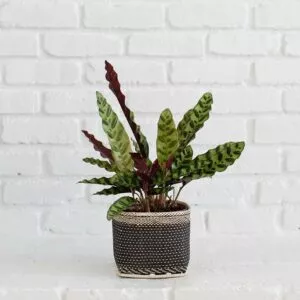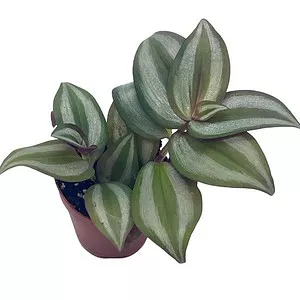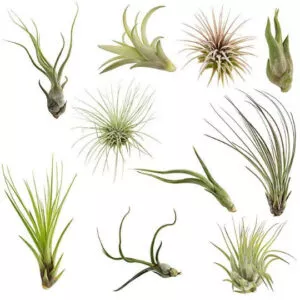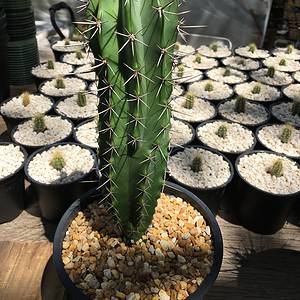No products in the cart.
Table of Contents
Anthurium andraeanum is a beautiful flowering plant you can grow in your garden. But it does not mean you cannot grow them as houseplants.
When they bloom, it is beautiful and long-lasting. The tropical flower belongs to the Arum family, and the blooms are waxy with bright red spathes and dark foliage.
Today, we will show you how easy it is to care for the Anthurium as houseplants.
What is the Anthurium Andraeanum?
Anthurium andraeanum, commonly known as the Flamingo Flower or Laceleaf, is a popular and striking tropical houseplant known for its unique and vibrant flowers and glossy, heart-shaped leaves.
It belongs to the Araceae family and is native to the rainforests of Central and South America, primarily found in Colombia and Ecuador. The most distinctive feature of the Flamingo Flower is its beautiful, waxy flowers.
These flowers come in various shades, including red, pink, white, and green, each with its own meaning. The actual flowers are small and inconspicuous, but they are surrounded by colorful, modified leaves called spathes, which give the plant its eye-catching appearance.
The spathes of Anthurium are heart-shaped or elongated and can be brightly colored, making them resemble a waxy, plastic-like material. These spathes can persist for weeks or months, adding a vibrant touch to your indoor space.
The tropical plant leaves are typically large, glossy, and dark green. They have a leathery texture and a heart or arrow-shaped appearance. Anthurium andraeanum is relatively easy to care for, making it a popular choice among indoor plant enthusiasts.
With proper Anthurium care, it can thrive and produce its distinctive flowers repeatedly.
Anthurium Andraeanum Care Tips

The flamingo flower grows best in bright indirect light and does not enjoy direct sun but can tolerate some low light. The only time they enjoy direct sun is during the winter to acclimate. A wild Anthurium plant thrives in a temperature of 60°F or above. When the temperature dips, your tropical plant suffers.
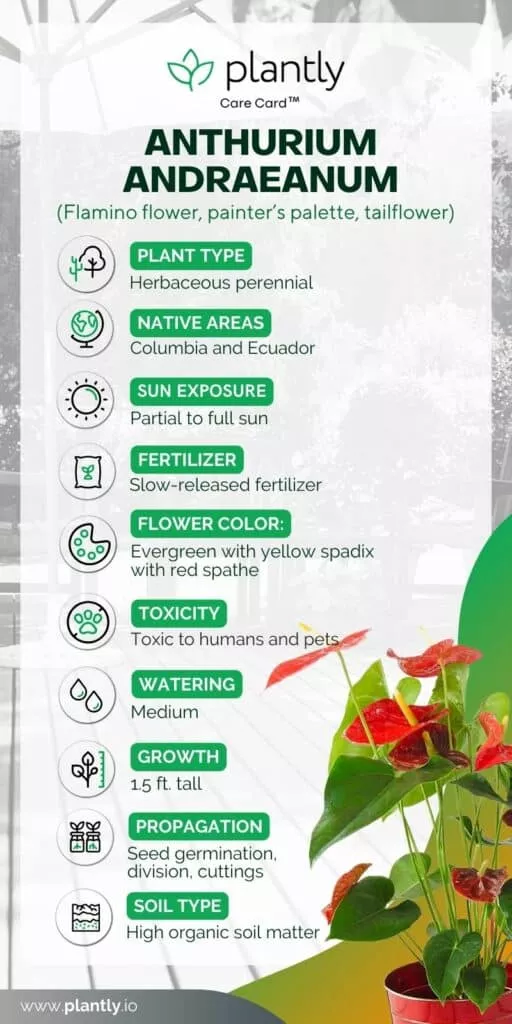
Potted plants provide well-draining soil and keep them moist but not soggy. Many Anthurium container plants are epiphytic in their natural setting, grow on other plants and not soil, and need support like a trellis or stake.
Flamingo Potting Mix
Choosing the right potting mix for your houseplants is essential to ensure their health and growth. Anthuriums prefer soil that drains well, allowing excess water to escape easily. A combination that retains moisture excessively can lead to root rot.
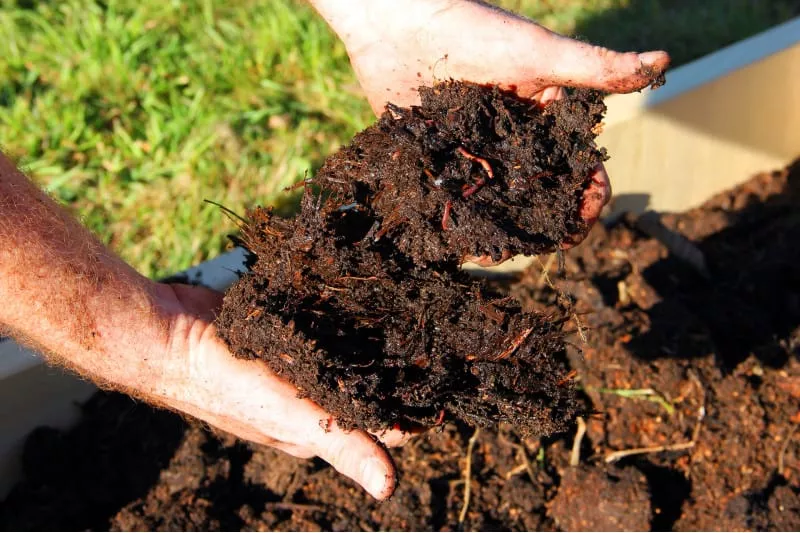
A peat-based soil, similar to an orchid mix, is commonly used for Anthuriums. It provides good moisture retention while also allowing for proper drainage. Add perlite or vermiculite to the potting mix to improve drainage and aeration. These materials help prevent the soil from becoming compacted.
Adding some small pieces of pine bark or orchid bark to the mix can enhance aeration and drainage. It also mimics the natural habitat of Anthuriums growing on trees or rocks. Peat moss is another good additive for moisture retention, especially if you live in a dry climate.
It can help maintain the required humidity levels for your Anthurium. Anthuriums typically prefer a slightly acidic to neutral pH. You can also find pre-made potting mixes formulated specifically for Anthurium flowers.
These are designed to meet the plant’s specific needs. Some organic matter, like coconut coir or well-rotted compost, can benefit your plant’s health. Avoid overdoing it, as Anthuriums don’t like overly rich soils.
Anthurium Water Routine
Proper watering is crucial for your plant’s health—Anthuriums like to be consistently moist but not waterlogged. Stick your finger into the soil about an inch deep to determine when to water. If the soil is dry at this depth, it’s time to water.
Use lukewarm water (around room temperature) when watering your Anthurium. Avoid using water that is too cold, as it can shock the plant. When you water, do so thoroughly until water drains from the bottom of the pot. This ensures that the entire root ball gets moisture.
After watering, allow the water to drain through the drainage holes and empty the saucer to prevent your houseplant from sitting in the standing water. Anthuriums are more tolerant of slight underwatering than overwatering. Overwatering can lead to root rot and other problems for your tropical houseplants.
Always err on the side of underwatering if you’re unsure. The watering frequency will depend on factors like temperature, humidity, and the size of the pot. Generally, you may need to water every 1-2 weeks but always rely on the soil’s moisture level as your guide.
Avoid wetting the Anthurium leaves when watering, as water droplets on the foliage can lead to fungal issues. Water directly into the soil around the base of the plant. Lastly, adjust the water requirements according to the season.
-
$40.00Sold By: NEEPA HUT
In stock
6″ Rattlesnake Calathea indoor plant + Charcoal Planter Basket
Only 4 available and it’s in 2 people’s basketRated 4.99 out of 5 based on 221 customer ratings11Sold By: NEEPA HUT -
$5.99Sold By: BubbleBlooms
In stock
Wandering jew, Tradescantia zebrina Bosse
Only 27 available and it’s in 5 people’s basketRated 4.81 out of 5 based on 279 customer ratings01Sold By: BubbleBlooms -
$6.00Sold By: Smoot's Farm
In stock
Succulent Gasteraloe Flow 2″ Pot Live Plant
Rated 4.89 out of 5 based on 27 customer ratings00Sold By: Smoot's Farm -
Free Shipping$13.99 – $24.99Sold By: Desert Noir
In stock
Rooting Soil, Desert Noir, proprietary blend, cactus, propagation, succulents
Rated 4.99 out of 5 based on 234 customer ratings04Sold By: Desert Noir
Bright Indirect Light
Anthurium andraeanum has specific light requirements to thrive and produce its iconic flowers growing in a container. Anthuriums prefer bright, indirect sunlight. They do well in locations where they receive filtered or dappled sunlight.
Avoid placing these plants in direct sun, especially intense afternoon sun, as it can scorch the Anthurium leaves. Placing your Anthurium near an east or north-facing window is often ideal. These windows typically provide the right amount of sunlight without exposing the plant to harsh sun rays.
While Anthuriums like bright sunlight, some tips are that they won’t thrive in deep shade. Inadequate sunshine can lead to fewer flowers and slower growth. If you have limited natural light, you can use artificial lighting to supplement.
Be mindful of the changing seasons. In the spring and summer, when days are longer, your Anthurium may benefit from more sun when growing as an indoor plant. In the fall and winter, you can reduce the light levels slightly. Pay attention to the color of the leaves.
Dark green leaves with healthy growth indicate the plant receives the right light. If the leaves become pale or yellowish-green, they may be getting too much light, and if they become dark green but leggy, they may need more light.
Rotate your houseplants every few weeks to ensure even new growth and prevent the plant from leaning toward the light source.
Temperature and Humidity
It is no surprise that Anthurium flowers enjoy temperatures in the day between 77°F and 89°F (25 °C to 32 °C) as they come from the tropics. For evenings, however, the temperatures need to be around 69°F-75°F (21°C to 24°C). Any temperature below this can result in no flowering, and it causes leaf tips to be damaged.

Another crucial need for your plant is high humidity, ranging between 70-80%. If you grow your Anthurium flowers inside, you may need to water them often to provide the right amount of moisture. If moisture is lacking, occasional misting would be necessary to provide them with the required humidity.
Alternatively, it helps to use a humidifier to provide the high humidity these plants need.
Fertilizer Care Tips
When looking at Anthurium care for feeding, remember that it does not need regular fertilization to bloom. If you want the blooms to be vibrant, feed every four months. If using fertilizer, dilute it to a quarter of strength.
It is best not to use a phosphorus-rich fertilizer as it can harm your plant. The signs resemble underwatering as the salts dry the leaves and stems and look withered. The best time to feed your Anthurium plants is in the growing season, spring and summer.
Propagation
Growing Anthuriums provides beautiful, long-lasting flowers to enjoy indoors or in the garden. The best way to enjoy houseplants is to ensure you always have tropical flowers in the home or garden through propagation. For many gardeners, propagation is a daunting task. But the good news is that it is simple with the Anthurium plant. The preferred methods used are stem cuttings and division.
Stem Cuttings
Start by choosing a plant you want to duplicate.
Find a stem that is six inches in length with two leaves attached.
Take a sterilized pruning shear, make an incision, and place the cutting into a small pot with enough drainage holes.
Place the cutting up to three inches deep into the soil and cover it with the ground, leaving the nodes at the top.
Saturate the soil with water and add moisture every other day to keep the top potting mix wet, not to dry out.
Place in a spot with high levels of humidity in indirect sunlight.
You can expect to see roots forming in six weeks and can slow down with the watering.
Division
As with the previous steps, choose a plant you want to multiply. Remove your plant from the pot to expose the roots. Use a clean, sharp knife to separate the roots, leaving you with two sections. Shake off the excess soil from the roots and place it into new pots with fresh soil. Water it well, move it into an area with partial light, and keep watering it as needed.
USDA Growing Zone
You can grow your Anthurium andraeanum plant in the environments of your home if you live in the USDA hardiness zones ten and above. If grown outside, remember these plants are sensitive to cold, and you must consider this.
Repotting Anthurium Plant
You need to repot the Anthurium plant every two to three years. The foliage takes some time to become root-bound and needs to be done carefully. So when your plant starts to outgrow its pot, you can remove it and trim away the wilted flowers and leaves.
Place your Anthurium flower in a larger pot about one to two inches in diameter. Fill the container with aerated soil and water them three times the normal amount until new growth appears. Always drain the excess water to prevent your plant from sitting in it.
Ensure that your plant’s root ball is placed in the holes at the same depth as in the previous container. Then, return to watering your regular watering schedule. Here is an excellent recipe for your plant to provide the soil with air and water retention.
– 60-70% peat-based potting mix
– 20-30% perlite or vermiculite
– 10-20% small pieces of pine bark
Pruning Anthuriums
When growing Anthuriums, as vital as it is to provide the proper temperatures, sun, moisture, feeding, and repotting for it to bloom, it also helps to prune them. Begin by closely examining your Anthurium to identify any dead or yellowing leaves, damaged stems, or overcrowded growth you’d like to remove.
Focus on the specific areas you want to prune. This may include individual leaves, stems, or flowers that are no longer healthy or aesthetically pleasing. When removing leaves or stems, make your cuts at the plant’s base, as close to the main stem as possible, without damaging it.
This encourages new growth from the node (the point where the leaf or stem meets the main stem). Then, remove dead flowers, allowing for flowering to take place again. Also, remove any yellow or damaged foliage, cutting them down to the base of the plant.
If your Anthurium has become crowded with leaves or stems, you can selectively remove some of them to improve airflow and overall plant health. Be mindful not to remove too many leaves, which can stress the plant.
Anthurium Andraeanum Varieties
Thousands of Anthurium plants of the Araceae family are known as aroids. Here are some of the other favorites found.
Anthurium scherzerianum

The species is very popular and looks like your Andraeanum, with one difference: it has a curly spadix. The leaves are elongated with a lance shape and taper to a narrow point. You can find the plant with purple-cream, pink, red, orange, or green blooms. The Anthurium plant has similar care needs as the Anturium Waterburyanum.
Anthurium amnicola
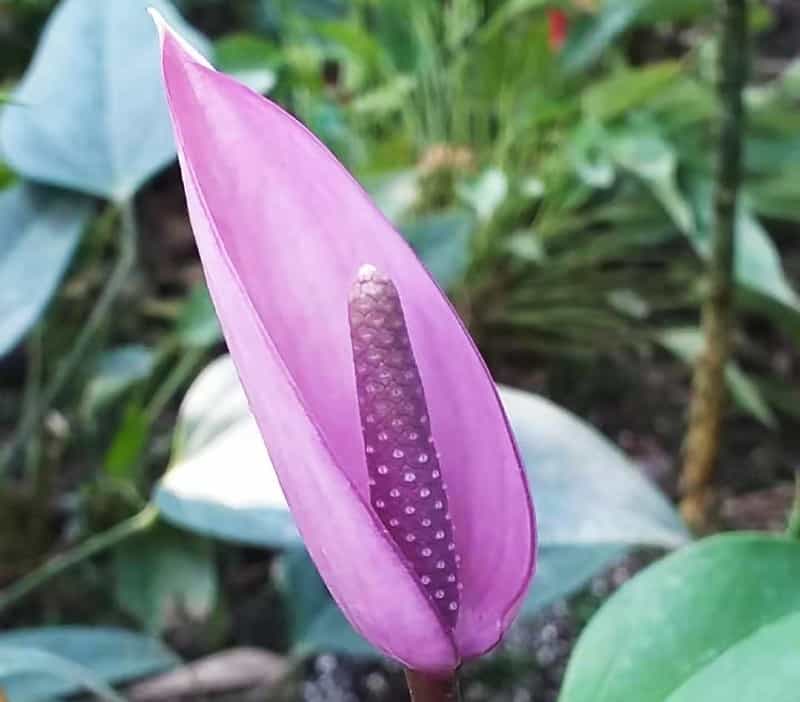
Tulip Anthuriums is a smaller compact plant that looks excellent indoors. The foliage is hardy, and caring for them is a breeze. You can find them in the White Lady, Lumina, and Lilli varieties. The Anthurium care is similar to the other varieties here.
Anthurium superbum
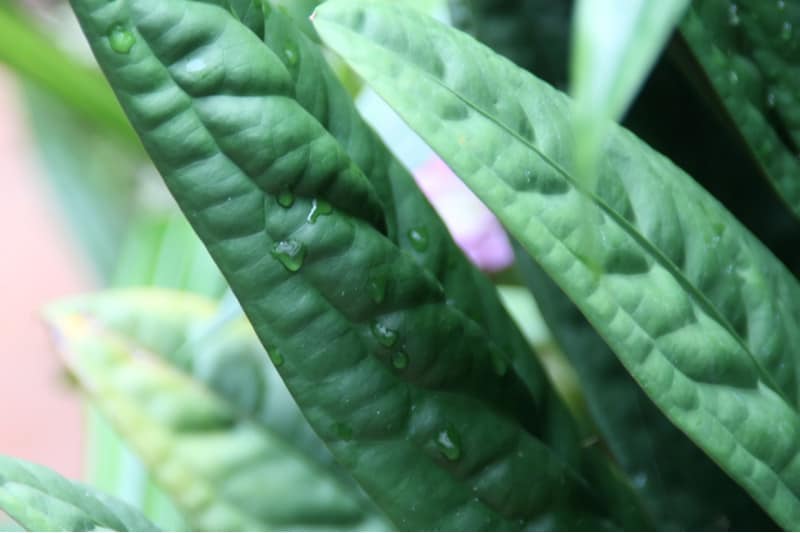
The Anthurium plant is an exotic and extraordinary species to start with. This outdoor plant has round textured green leaves with toned undersides and long. It has an upright growing pattern while the foliage comes forth prehistoric. The anthurium care is similar to that of most anthuriums.
Anthurium Andraeanum Diseases & Pests
While the Anthurium plant is easy to care for, it falls prey to some issues, including pests. Here are some of the problems you can face with your Anthurium flowers.
Curling Leaf Tips
The cause can be the lack of water; the best remedy is to provide your Anthurium flowers with regular watering. You can start by saturating them well and gradually working to find a balance.
Brown Spots on the Leaves
Noticing brown spots on the leaves can be caused by too much direct sunlight or need more nutrients. To find out the cause, first, move your Anthurium plants to a place with less light. If that does not solve the problem, we recommend diluting fertilizer. When there are no more brown spots, you will know you have found the cause of the problem.
Frequently Asked Questions
The name “Anthurium” is derived from Greek words. It combines “anthos,” which means “flower,” and “oura,” which means “tail.”
The name is quite fitting for this plant because the central feature of an Anthurium flower is a slender, elongated structure called a “spadix” that protrudes from the spathe (the colorful, petal-like structure).
The spadix is often referred to as a “flower spike” or “flower tail,” which aligns with the origin of the name “Anthurium.”
No, Anthuriums should not be placed in direct sunlight, especially intense afternoon sun. They prefer bright, indirect light. Direct sunlight can scorch their leaves.
Yellowing leaves can be due to overwatering, underwatering, or poor light conditions. Check the soil moisture, adjust your watering schedule, and ensure the plant gets adequate, indirect light.
To encourage blooming, provide proper care with the right light, water, and humidity. Give your plant fertilizer during the growing season and ensure the plant isn’t root-bound. Be patient, as Anthuriums may bloom periodically rather than continuously.
Anthuriums don’t require frequent repotting. Repot when the plant becomes root-bound, which might be every 2-3 years, or when you notice the plant outgrowing its current pot.
Use a well-draining potting mix that includes peat moss-based mix, perlite, vermiculite, and small pieces of pine bark. Ensure the mix has a slightly acidic to neutral pH.
Your best options for finding Anthurium andraeanum are local nurseries and garden centers, flower shops, online mail-order plant retailers, botanical gardens, Anthurium enthusiast groups, and specialty seed catalogs if they sell starter plants.
Look for sellers with healthy green foliage and roots. With proper care indoors, this popular tropical plant will thrive and produce beautiful heart-shaped flower spathes.
Whether you want to buy, sell, or simply reach out to other plant enthusiasts, Plantly is the right place to be!
-
Free Shipping$156.04Sold By: BONSAI WORLD LLC
Only 1 left in stock
Ficus Kaneshiro Bonsai Tree (ficus microcarpa ‘kaneshiro’)
Only 1 available and it’s in 1 people’s basketSold By: BONSAI WORLD LLC -
$45.00Sold By: Beauties & Beasts
$50.00In stock
Ceramic Planters- Rae Dunn by Magenta Stem Print- Set of 2
Rated 4.83 out of 5 based on 24 customer ratings00Sold By: Beauties & Beasts -
Free Shipping$18.95Sold By: CTS Air Plants
In stock
Air Plants Tillandsia Collection of 10 Easy Houseplants
Only 100 available and it’s in 2 people’s basketSold By: CTS Air Plants -
